As the leading POS provider in the eCommerce market, Lightspeed vs Shopify offers a range of powerful functions to attract your customers’ shopping. However, what are the key differences between these platforms? Which suits your business most? For detailed answers, let’s follow our evaluations below.
In this article, LitExtension will present a detailed Shopify vs Lightspeed comparison by delving into the following points:
- A quick summary of the two platforms;
- Detailed comparison between Lightspeed and Shopify;
- and which platform is the optimal choice for your business, Lightspeed or Shopify?
Right now, let’s get in!
Seamlessly Migrate Your Store With LitExtension
Our team of experts can safely transfer your business data, products, customers, and orders to unlock more growth in this promising eCommerce platform. Let us provide a customized migration for you!
Lightspeed vs Shopify: A Quick Summary
What is Lightspeed?
Lightspeed is a cloud-based eCommerce solution that unifies point of sale (POS) and payments. Nearly 168,000 worldwide retailers have been using Lightspeed, making it one of the promising platforms for merchants (Source: Lightspeed).
Basically, Lightspeed provides 9 different versions; however, 8 series of them were developed to serve retail activities. That’s also why many sellers call Lightspeed Lightspeed Retail.
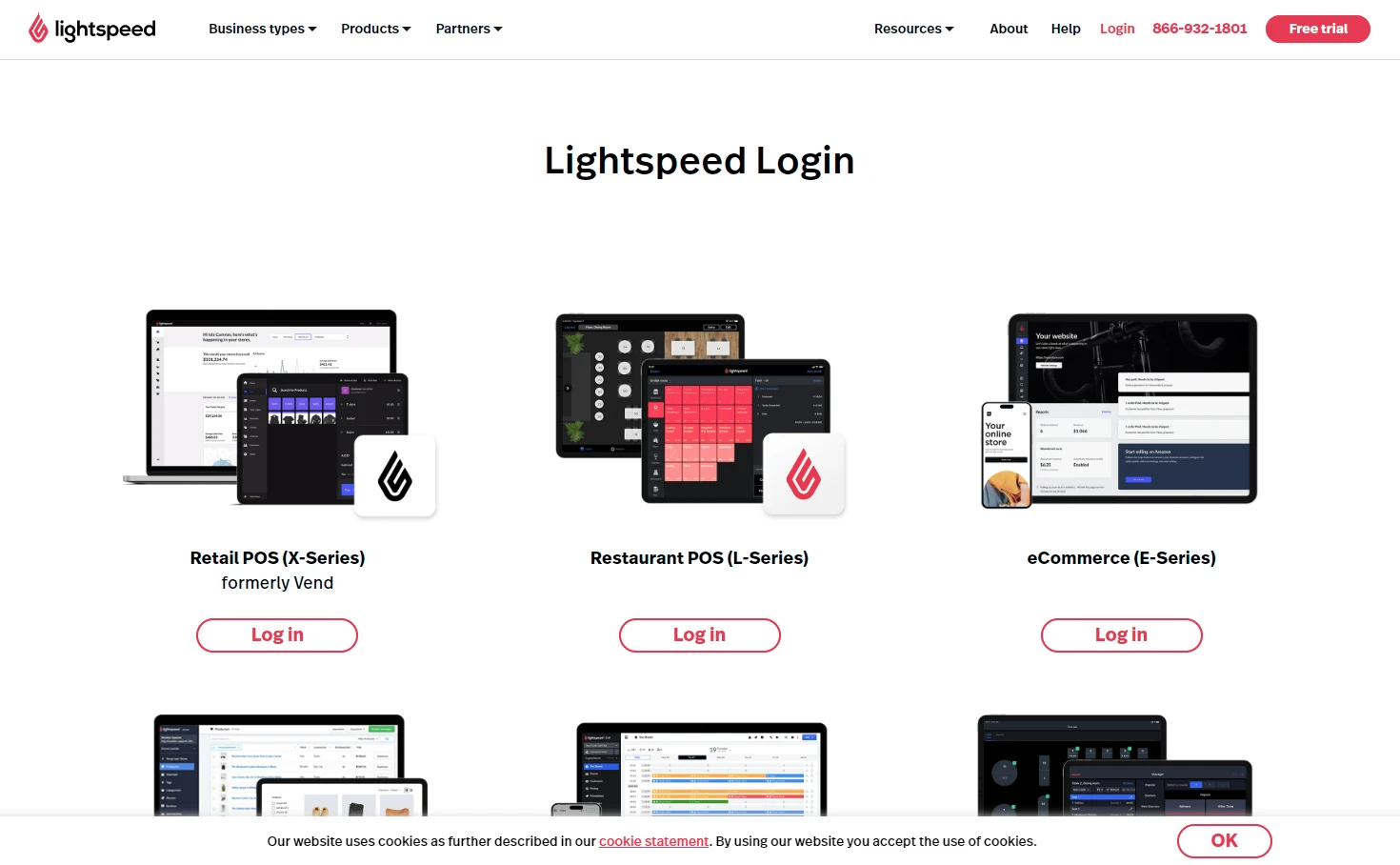
Besides that, Lightspeed stands out with powerful features like inventory and retail store management, cash drawer control, and especially POS hardware. It is a great chance to manage online and offline stores effectively.
[wptb id=70933]What is Shopify?
Shopify is an all-in-one eCommerce solution for growing online businesses conveniently. Founded in 2006, this platform currently powers over 4 million live websites from different fields.
With Shopify, you can experience the platform for free within 3 days. After that, you can extend the trial period for three more months at only $1 each. This is a great chance to discover more about how Shopify works and familiarize yourself with its dashboard.

Shopify merchants have a chance to use unique apps and themes to optimize their store’s performance. Additionally, this solution offers flexible pricing plans, which are beneficial to cater to the needs of each business size.
Take a look at the table below for all the Shopify advantages & disadvantages. In case you need an in-depth understanding of this platform, don’t forget to refer to our Shopify reviews.
[wptb id=70935]Now, let’s keep walking with us to see a head-to-head comparison between Lightspeed vs Shopify.
8 Differences When Comparing Lightspeed vs Shopify
Here is a comparison table of Lightspeed vs Shopify, depending on the 8 different features.
[wptb id=70937]#1. Pricing plans
Both Lightspeed and Shopify offer users free trials. However, there are some pricing differences between Lightspeed vs Shopify. Now, keep scrolling to discover more!
Lightspeed
With Lightspeed, you will have a chance to experience Lightspeed Retail free for 14 days without any credit card or commitment. According to business type, LightSpeed provides 4 distinctive pricing plans:
- Lightspeed Retail: $119 – $249/month;
- Lightspeed eCommerce: $0 – $82.50/month;
- Restaurant: Prices change based on the business model and the industry;
- Golf: Pricing varies depending on requirements.
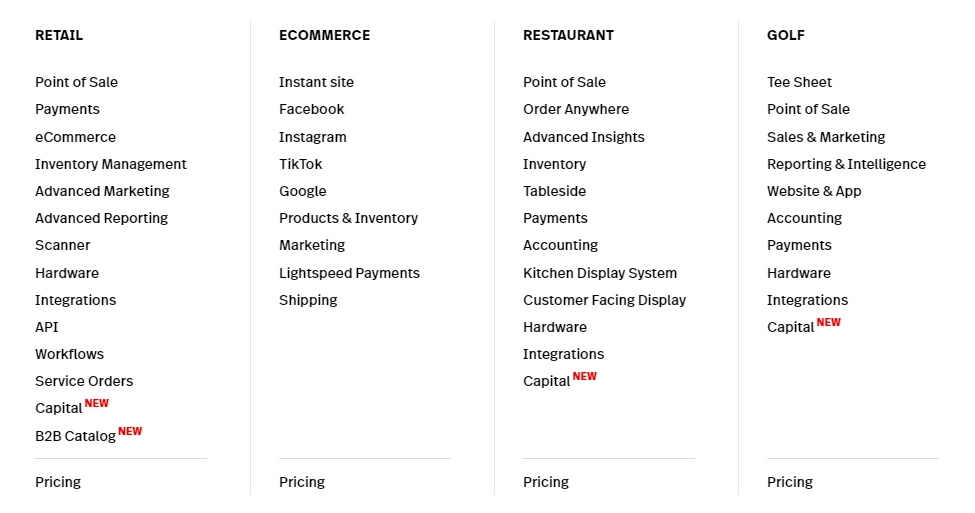
Shopify
There are 5 Shopify pricing plans as follows:
- Starter: $5/month.
- Basic Shopify: $39/month.
- Shopify: $105/month.
- Advanced Shopify: $399/month.
- Shopify Plus: Pricing varies depending on requirements.
As we mentioned above, Shopify offers you a free trial within 3 days. Nevertheless, you need to pay for a domain (around $14/year) to maintain your store operation.
Verdict: When comparing pricing plans between Lightspeed and Shopify, Shopify is more affordable than Lightspeed. Starting from $5/month, you can easily start your official online business.
#2. POS system
In the comparison of Lightspeed vs Shopify POS, we will evaluate the 2 main concerns: POS mobile app and POS hardware. In particular:
Lightspeed
Thanks to Lightspeed’s constant updations, you can use cloud-based mobile POS (mPOS) to make your retailing activities more flexible and secure. Nevertheless, this solution doesn’t support barcode scanning. Thus, you need to register for extra apps to optimize your store’s transactions through mobile devices.
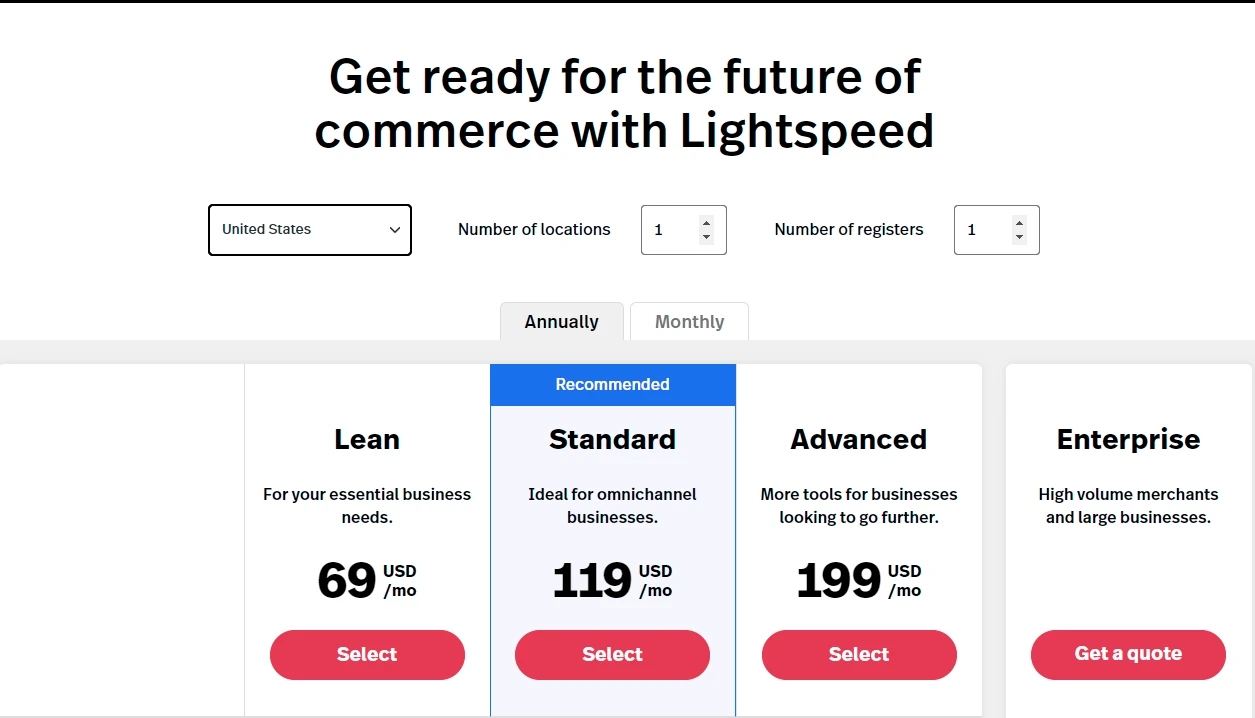
Depending on the number of locations and registers, Lightspeed POS can charge you different pricing levels. If you only have one location and register, you need to pay $69 to $199/month to use the POS system (in the United States). With the Enterprise package, you need to contact the Lightspeed team for the final quote.
Don’t forget to consider Lightspeed processing fees, starting from 2.6% + 10¢ per transaction.
Regarding Lightspeed hardware, you can set up a POS system by using one of the 2 following hardware bundles:
- iPad hardware kit: LAN receipt printer, cash drawer, Bluetooth scanner, Lightspeed iPad stand, and Receipt paper
- Desktop hardware kit: USB receipt printer, Cash drawer, and USB scanner.
In case you don’t need an entire hardware package, you can take any individual POS equipment.
Shopify
When it comes to Shopify mPOS, you can freely customize your checkout to give your customers a better experience. However, this POS is only used on iOS; thus, you can not activate your store’s POS across multiple devices.
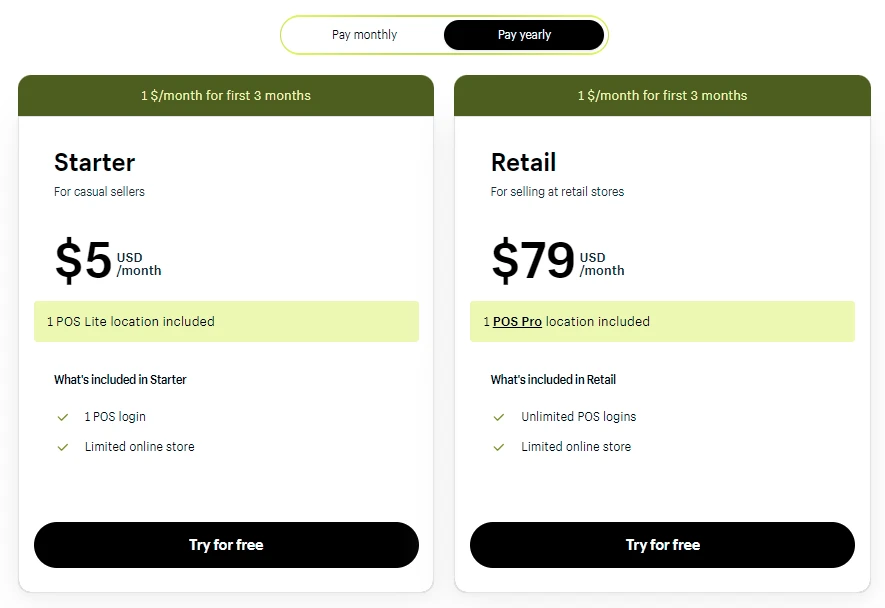
Comparing the transaction fee of Lightspeed vs Shopify, Shopify charges you a lower rate, from 2.4% + 0¢ per order. Additionally, you only need to pay from $5/month to $79/month for your business with a POS. This helps you save your budget effectively.
That said, you cannot find any available POS hardware package like Lightspeed. In this case, you can completely buy the necessary items individually. Below are some of the most common POS hardware devices on Shopify:
- Tap & Chip card reader
- Countertop Kit
- POS Go
- Tap to Pay on iPhone
- Shop barcode scanners
- Shop receipt printers and cash drawers.
Similarly, you can refer to Shopify vs Square to discover the differences between these leading POS systems.
Verdict: Lightspeed apparently beats Shopify thanks to its POS-tailored features and excellent POS hardware bundles.
#3. Inventory management
Another concern we will discuss concerns Lightspeed vs Shopify stock (inventory), one of the biggest differences between these platforms.
Lightspeed
Lightspeed is known as the best inventory POS system. This solution offers powerful inventory features, such as smart pricing assistance, kitting tools, wastage tracking, and multi-managed inventory, which can improve and smooth your inventory management.
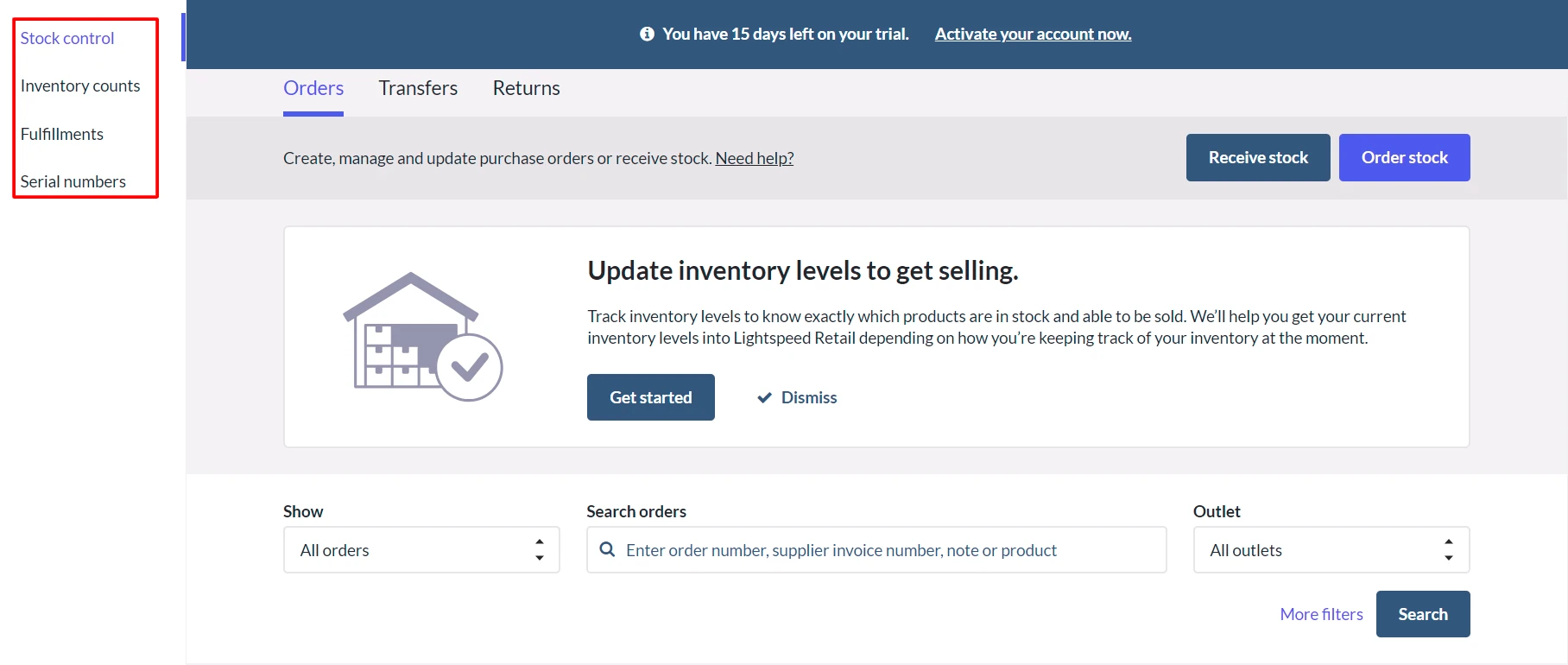
Shopify
On the contrary, you’ll need an additional integration or advanced package to optimize your inventory management when selling on Shopify. For example, to have a customizable stock matrix, it’s required to register for POS Pro. If you want to set up inventory-relating alerts, you’ll have to employ the Stocky app. And, of course, you need to pay more to satisfy these requirements.
Verdict: In our comparison of Lightspeed vs Shopify, Lightspeed persuasively wins over Shopify thanks to its outstanding features like smart pricing assistance, kitting tools, and wastage tracking.
#4. Integrations & add-ons
Both Lightspeed and Shopify can provide a wide collection of third-party integrations. If so, what should we discuss in this concern?
Lightspeed
We only have a seven-option list of Lightspeed add-ons to consider. They include C-series, E-series, financial services, loyalty, accounting, analytics, subscriptions, NuORDER, partner integrations, and retail API. From our experience, these add-ons are not varied enough to make your business unique.

Shopify
By contrast, Shopify provides more than 8,000 apps covering various aspects like selling, design, marketing, inventory, orders, shipping, and searching. Indeed, you can use both free and paid apps to optimize your store’s performance. This can greatly improve the flexibility of your business strategies.
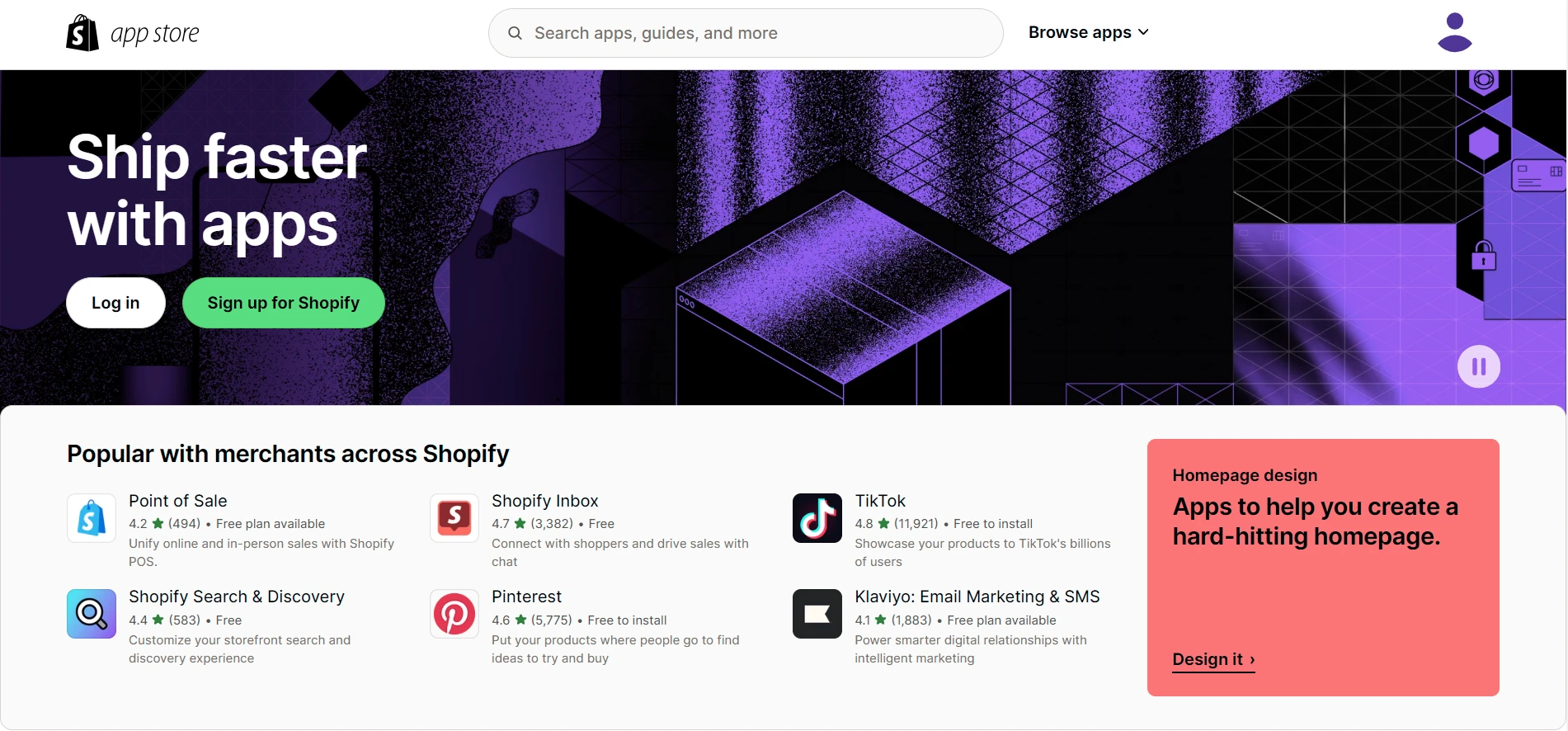
Verdict: Regarding the integration ability and the number of apps, Shopify is more evaluated than Lightspeed, with thousands of available options.
#5. eCommerce tools
To improve your store’s sales effectively, it’s necessary to invest in eCommerce values. Here are the outstanding eCommerce tools of Lightspeed vs Shopify you should consider:
Lightspeed
With Lightspeed, you can get the basic features to start your offline or online store easily. For example, you can import stock from any source and create bespoke discount codes to encourage your customers’ shopping.
For shipping and payment, it’s recommended to use Lightspeed Payment and Shipstation or EasyPost shipping providers. However, Lightspeed Payment is only available in the United States.
Nevertheless, Lightspeed is a POS-tailored solution. Thus, it’s visible that the platform lacks powerful features like cross-channel or online marketplace sales.
Shopify
On the other hand, Shopify is an all-in-one eCommerce-tailored solution. With a range of great tools and an intuitive dashboard, you can analyze your business in-depth and manage it easily.
Besides that, Shopify allows easy integration into multiple eCommerce platforms and sales channels. It’s a huge advantage of Shopify over LightSpeed in multichannel selling.
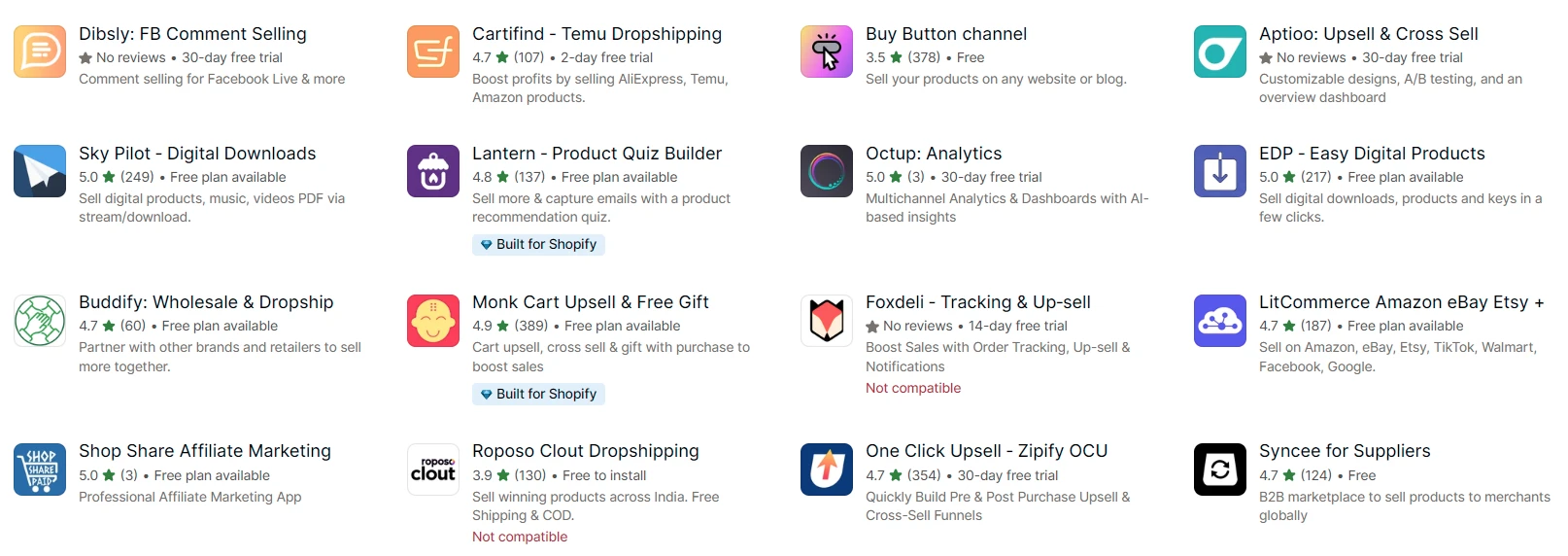
Unlike Lightspeed, Shopify’s in-house payment method, Shopify Payment, is available in 23 countries. With this support, you don’t need to pay for transaction fees like external payment gateways, which helps you save your budget effectively.
Verdict: When comparing Lightspeed eCommerce vs Shopify in terms of eCommerce ability, Shopify surely does better than Lightspeed Retail. Shopify comes with powerful eCommerce features, especially when it comes to multichannel selling.
Save Time Import Store Data to Shopify
Trusted specialists streamline migrations that actualize ambitions.
#6. Reporting and analytics
When it comes to reporting and analytics on your store’s performance, the more data you have, the better insights you get. If so, which option is a winner in this aspect?
Lightspeed
Lightspeed can provide you with a range of powerful reporting tools and over 40 available report templates. That’s why you can use Lightspeed to complete the majority of tasks, including:
- Remove dusty inventory
- Control the store’s interactive dashboards
- Measure/forecast customer demand
- Remove dusty inventory.
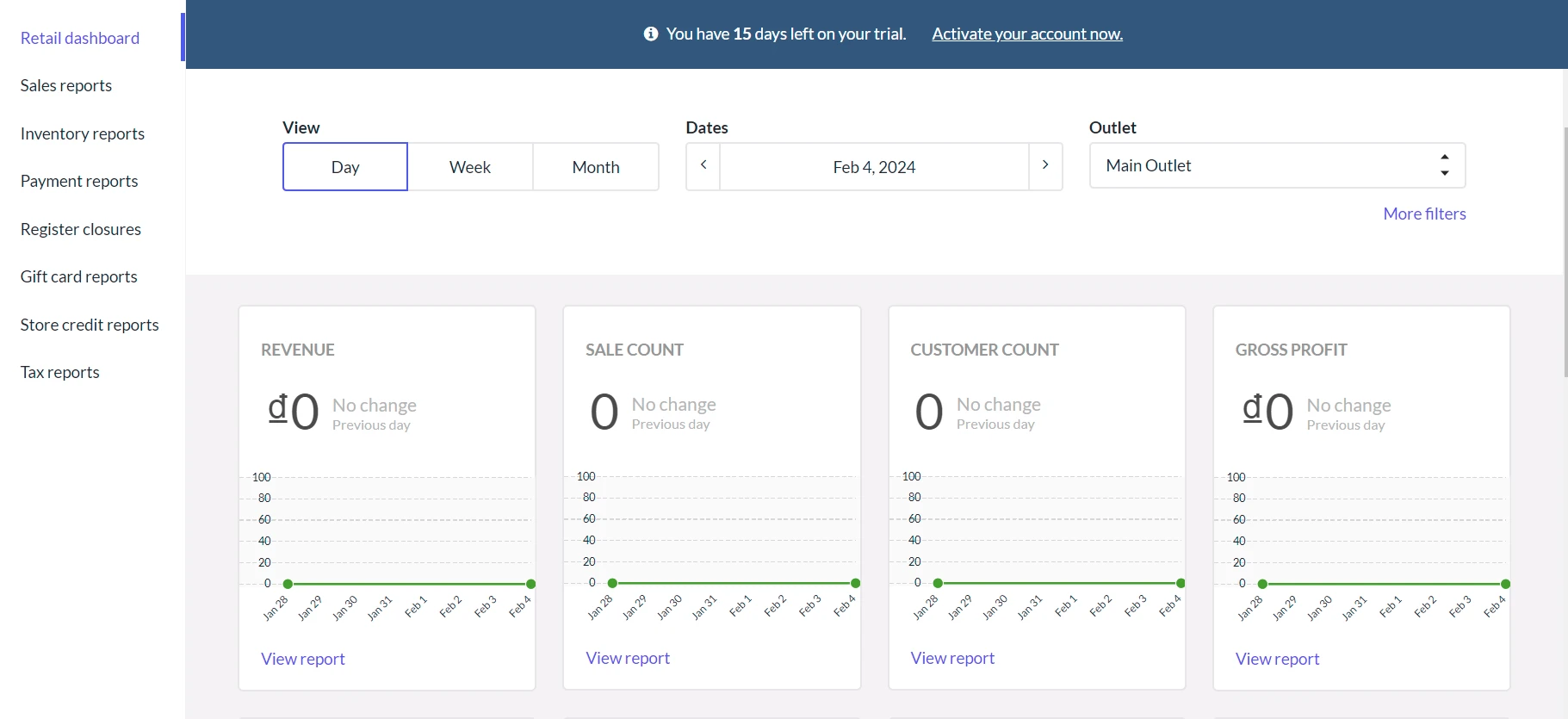
Shopify
Shopify also supports similar reporting functions to Lightspeed. For example, you can use Shopify to report your store’s sales, category performance, or general fields.
If you are selling with higher plans, Advanced or Shopify Plus, you will have the right to customize your final reports. You can freely design or modify anything to improve the display of your reports.
Verdict: Lightspeed vs Shopify offer users full features to optimize their sales reports. Thus, it’s difficult to pick a winner in this situation.
#7. Marketing features
Continuing our comparison with marketing features, let’s see what Lightspeed vs Shopify has to offer to boost your business’s marketing strategies.
Lightspeed
Lightspeed eCom has various marketing tools to empower your business effectively. You can advertise on Facebook, connect your new feed to Instagram, or launch a TikTok channel to attract more attention from the public.
Moreover, you can grow your store faster with Google tools, as well as email marketing campaigns.
Shopify
When it comes to marketing features, Shopify is rated higher than Lightspeed. Shopify offers a fully functional tool list, together with automated chats. This is great for improving your store’s customer service. Also, you can freely integrate marketing apps to boost your site’s rankings on search engines significantly.
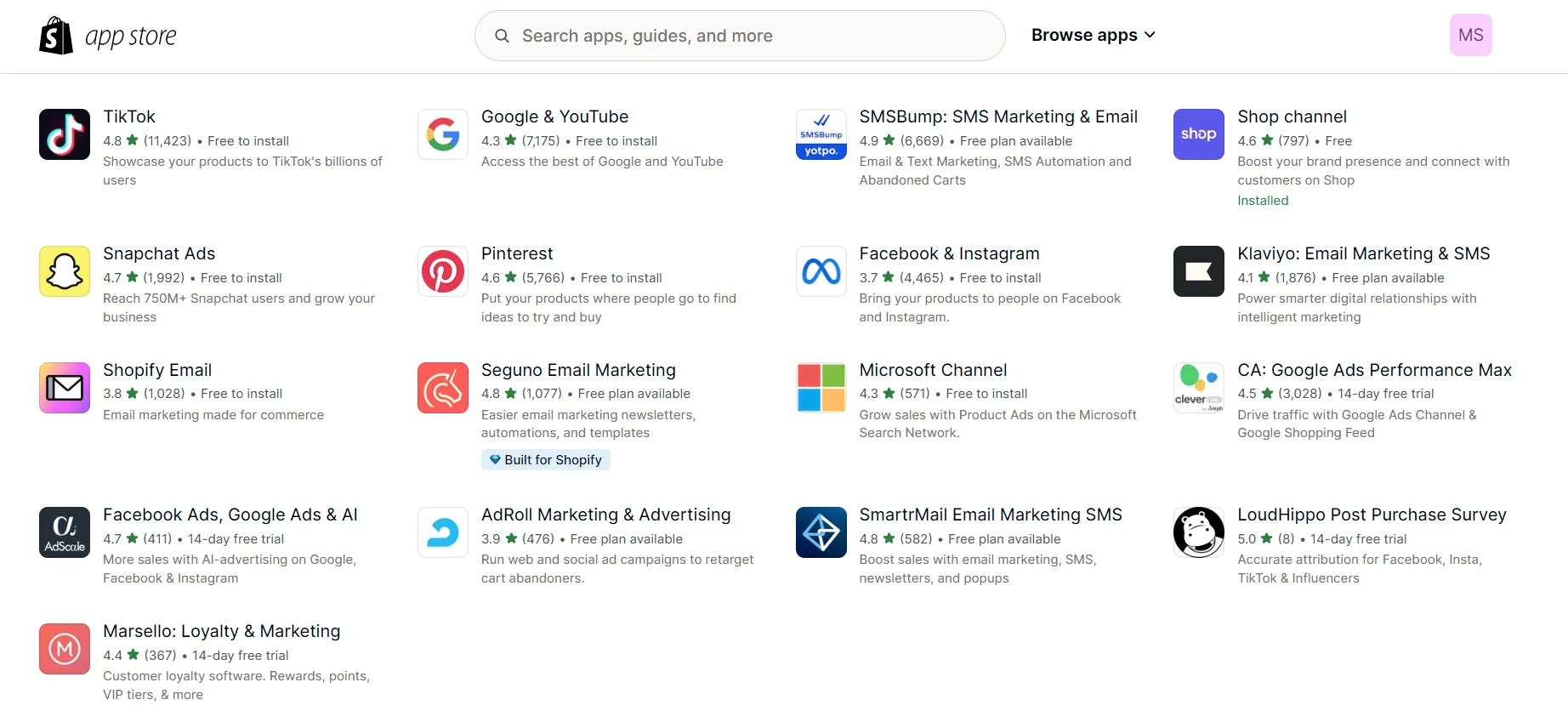
Verdict: Thanks to its high response and automation, Shopify brings more marketing value compared to Lightspeed.
#8. Customer support
In the final section of our comparison of Lightspeed vs Shopify, we will discuss their customer support.
Lightspeed
You can contact the Lightspeed support team 24/7 through various methods like the Help Center, live chats, or phone. With Help Center, Lightspeed divided all common issues into 9 main categories, which is great for finding proper answers.
That said, the quality of responses from Lightspeed’s customer service is not consistent. Most of the answers are not clear enough to fix your store’s current issues.
Shopify
Shopify beats Lightspeed in this case thanks to its consistent support, as well as plenty of contact methods. One of the most interesting points about Shopify customer support is offering support through social media. This can make your connecting process with the Shopify team easier and more flexible.
Verdict: In terms of customer support, Shopify convincingly wins Lightspeed, which impresses merchants with consistent and high-quality services.
Lightspeed vs Shopify: Which Option Should You Pick Up?
In our experience, both Lightspeed vs Shopify are the leading eCommerce and POS solutions you should not miss. With each platform, you can get distinctive benefits for your online and offline store.
Below are our suggestions about when to use Shopify or Lightspeed:
- Lightspeed: Best for brick-and-mortar stores with large inventories/ high-risk items and merchants preferring a comprehensive POS system.
- Shopify: Best for dropshipping companies, eCommerce-tailored stores, multichannel sales, and merchants with tight budgets.
If you are running a Lightspeed store and want to transfer it to Shopify, let’s perform a Lightspeed to Shopify migration with LitExtension to get the finest results. Being one of the most reliable Lightspeed partners, LitExtension can ensure a smooth and seamless data transfer to Shopify.
You can also refer to our Light to Shopify migration guide to follow detailed steps for your store’s switching process.
Lightspeed vs Shopify: FAQs
[sp_easyaccordion id=”70931″]
Conclusion
Our blog has just provided a detailed comparison of Lightspeed vs. Shopify. By comparing each feature, we hope you have discovered more about how they work and their typical points, which is essential to picking the best solution for your business.
LitExtension, the #1 Shopping Cart Migration Expert, hopes you have a deeper understanding of Shopify vs Lightspeed differences. Check out our LitExtension Blog or join our Facebook Community Group for more valuable insights.
